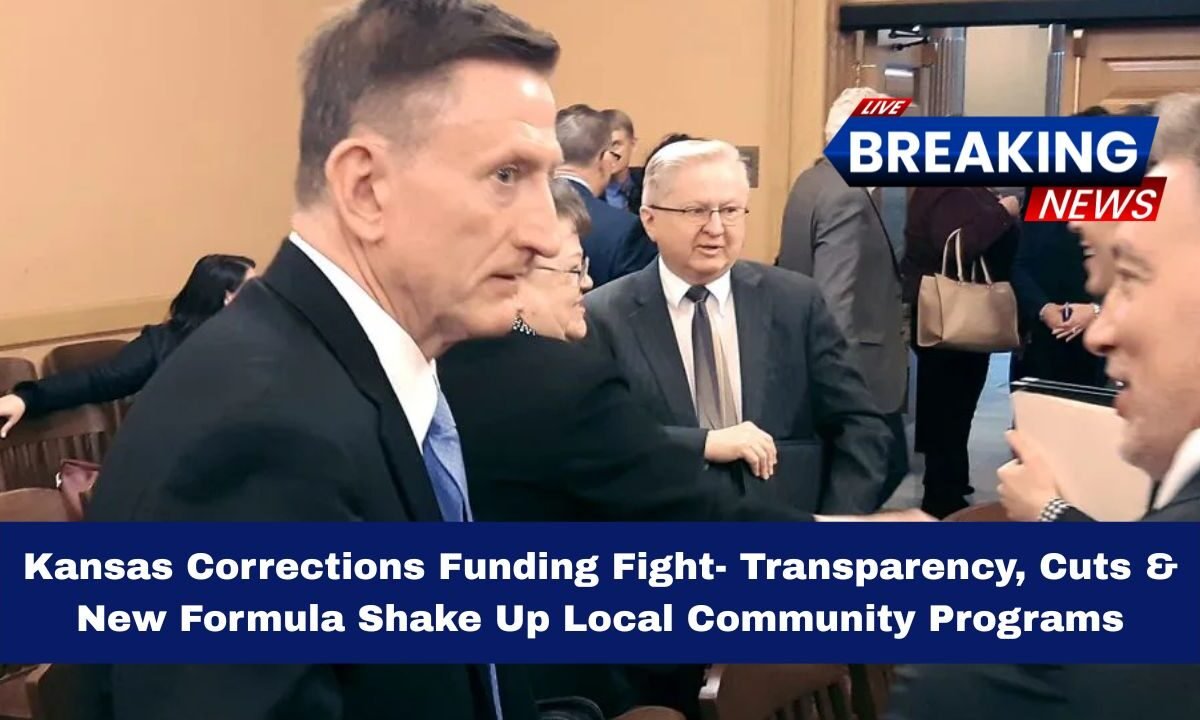In a move stirring controversy across Kansas, the Kansas Department of Corrections (KDOC) has proposed a new funding formula for its community corrections programs.
These efforts aim to reallocate state funds in a bid for greater transparency and equity, but push-back from local agencies and worries about “political horse-trading” have now stalled the plan.
What’s at Stake
Community corrections in Kansas cover alternatives to prison or jail for individuals on probation or parole, supervised in county-run programs. The proposed changes would cut funding in the state’s largest urban areas and increase allocations in smaller, less-populated regions.
KDOC Secretary Jeff Zmuda explained the changes were meant to address long-standing concerns over fairness and clarity in how funds were divided.
However, many local corrections agencies say they don’t understand the new formula, and feel the proposed cuts threaten public safety and community supervision capacity.
They fear funding might now be subject to negotiation and “horse-trading” rather than being based on objective criteria.
Key Funding Details
| Category | Details |
|---|---|
| Full implementation year | Fiscal Year 2029 (after a three-year rollout) |
| Districts with decreased funds | 10 out of 31 |
| Districts with increased funds | 21 out of 31 |
| Largest proposed reduction | Sedgwick County – 37% cut |
| Other major reductions | Southwest Kansas district – 21% cut; Ottawa & Saline counties – 20% cut; Wyandotte County – 15% cut |
| Biggest increases | West-central district – 60%; Sumner County – 57%; Leavenworth County – 55% |
| Prison cost per inmate | $115.27 per day or $42,000 per year |
| Community corrections supervision cost | $11.76 per day or $4,300 per year |
Why the Changes Were Proposed
According to KDOC Secretary Jeff Zmuda, the funding formula needed to be restructured to improve fairness. Many local directors questioned how money was distributed, claiming there was no clear logic or accountability behind allocations.
Under the new formula:
- 60% of the funding would be based on caseloads, measured quarterly.
- The remaining 40% would be determined by factors such as poverty levels, crime rates, population size, district area, agency turnover, and success rates.
This system was meant to create consistency and reward performance. However, many agencies didn’t fully understand the formula or feel confident that it would improve outcomes.
Local Opposition and Concerns
Counties facing major cuts—especially Sedgwick County—raised alarm that the changes could threaten public safety. Officials argued that local crime rates, mental health issues, and supervision levels had not changed, only the funding had.
Sedgwick County’s corrections director warned that the proposal might lead to inconsistent results or even “horse-trading,” where funding could be adjusted politically rather than through objective measures.
Lawmakers also expressed concern that the department had not been conducting thorough audits of local correctional plans, which could lead to misuse or uneven funding practices.
Transparency and Trust Issues
One of the biggest challenges in the debate is trust. Many local correctional leaders said they didn’t have enough clarity on how the new data-driven formula was developed. They argued that decisions were being made behind closed doors without full input from all counties.
Lawmakers emphasized the need for regular performance audits, clear communication, and measurable goals to ensure taxpayer dollars are used efficiently.
Without these steps, the corrections budget could become a political battleground instead of a fair, transparent system.
The Cost of Reform
Supporters of the new funding model highlight how community corrections programs are far cheaper than prison sentences. It costs nearly 10 times more to incarcerate a person than to supervise them in the community.
However, if major urban areas like Sedgwick and Wyandotte lose funding, supervision resources could be strained, possibly leading to increased recidivism or public safety risks. Balancing fairness with efficiency remains a tough challenge for the state.
The ongoing Kansas corrections funding fight reveals the difficulties of reforming a decades-old system. While the KDOC aims for fairness and transparency, the pushback from local agencies shows how sensitive budget reallocations can be.
Without clear communication and accountability, even well-intentioned reforms risk being seen as political moves. The pause in implementation gives Kansas a chance to rebuild trust, refine the formula, and ensure the state’s justice system remains both fair and effective.




